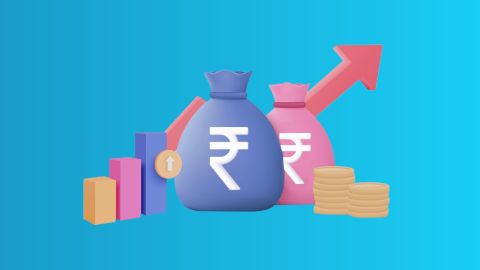GST on Clothes, Readymade Garments and Textiles
Clothes priced below Rs. 1000 are taxed at 5% GST, while those priced at Rs. 1000 or more are taxed at 12% GST.
Ready-made garments are taxed at a 12% GST rate, while synthetic or man-made fibres and fabrics are taxed at 18% GST.
The standard GST rate for textile products is 12%, but if apparel and footwear cost less than Rs. 1000, a 5% GST is applied.
GST rates on clothes and apparel
Below is a table summarising the GST rates applicable to various categories of clothes and apparel in India:
Category |
Details |
GST rate |
Silk and Jute products |
No GST on natural silk and jute fibres. |
Exempt |
Fabrics |
All types of fabrics, whether natural or synthetic. |
5% |
Apparel up to Rs. 1,000 |
Applies to garments with price at or below Rs. 1,000 per piece. |
5% |
Footwear up to Rs. 1,000 |
Applies to footwear with price at or below Rs. 1,000 per pair. |
5% |
Textile job work |
Includes services like embroidery, weaving, knitting, and other textile manufacturing processes. |
5% |
Garment accessories |
Includes items like belts, ties, scarves, and other accessories used in clothing. |
12% |
Apparel above Rs. 1,000 |
Applies to garments with price above Rs. 1,000 per piece. |
12% |
Footwear above Rs. 1,000 |
Applies to footwear with price above Rs. 1,000 per pair. |
18% |
GST rate on textile materials
All types of clothing and apparel priced above ₹1,000 are subject to a GST rate of 12%. Conversely, a lower GST rate of 5% applies to textile products when the price of apparel and footwear is below ₹1,000.
Sr. No |
Items |
HSN Code |
GST Rate |
1 |
Silk yarn |
5004 to 5006 |
5% |
2 |
Woven fabrics of silk or silk waste |
5007 |
5% |
3 |
Garneted stock of wool, fine or coarse animal hair, shoddy wool |
5104 |
5% |
4 |
Wool and fine or coarse animal hair, carded or combed |
5105 |
5% |
5 |
Yarn of wool or animal hair |
5106 to 5110 |
5% |
6 |
Woven fabrics of wool or animal hair |
5111 to 5113 |
5% |
7 |
Cotton and cotton waste |
5201 to 5203 |
5% |
8 |
Cotton sewing thread (whether or not put up for retail sale) |
5204 |
5% |
9 |
Cotton yarn (other than khadi yarn) |
5205 to 5207 |
5% |
10 |
Woven fabrics of cotton |
5208 to 5212 |
5% |
11 |
Flax, raw or processed but not spun; flax tow and waste |
5301 |
5% |
12 |
Textile bast fibres (other than jute fibres) |
5303 |
5% |
13 |
All goods including yarn of flax, jute, other bast fibres |
5305 to 5308 |
5% |
14 |
Woven fabrics of vegetable textile fibres, paper yarn |
5309 to 5311 |
5% |
15 |
Woven fabrics of manmade textile materials |
5407, 5408 |
5% |
16 |
Woven fabrics of manmade staple fibres |
5512 to 5516 |
5% |
17 |
Real zari thread (gold) and silver thread |
5600, 5605, 5610 |
5% |
18 |
Jute twine, coir cordage or ropes |
5607 |
5% |
19 |
Knotted netting of twine, cordage or rope |
5608 |
5% |
20 |
Products of coir |
5609 |
5% |
21 |
Coir mats, matting, floor covering and handloom durries |
5702, 5703, 5705 |
5% |
22 |
Narrow fabrics assembled by adhesive (bolducs) |
5806 |
5% |
23 |
All goods of knitted or crocheted fabrics |
60 |
5% |
Tailoring services and clothing rentals are charged a GST rate of 5% under HSN code 9988.
Furthermore, the composition scheme is available for businesses supplying clothing, provided their annual turnover does not exceed ₹1.5 crore (or ₹75 lakhs in the northeastern states). For businesses engaged in clothing rental or stitching services, the turnover limit for the composition scheme is ₹50 lakhs
Taxability of GST on clothes and textiles
The sale of clothes, whether stitched or unstitched, is taxable under GST as it falls within the scope of supply. However, raw jute and raw silk are taxed at a nil rate, so if you deal in raw jute or raw silk, or run mills, there is no need to register under GST or pay taxes.
Buyers of raw cotton must pay GST at 5% on a reverse charge basis. Tailoring services and renting of clothes also attract GST. However, the composition scheme is available for the supply of clothes if the annual turnover is up to Rs. 1.5 crore (Rs. 75 lakhs in north-eastern states). The limit for cloth renting or stitching services is Rs. 50 lakhs.
For 'Buy one, get one free' offers, GST is not charged on the items given without payment. Also, input tax credit is not available for these items.
Importance of the apparel industry to India
The apparel industry is a vital sector of the Indian economy, significantly contributing to employment, export earnings, and economic growth. As one of the largest producers of textiles and garments globally, India has a rich heritage in textile production, with the industry deeply rooted in the cultural fabric of the country.
Employment is one of the key areas where the apparel industry plays a crucial role. It is the second-largest employer in India, providing livelihoods to millions, especially women and rural populations. This industry encompasses a wide range of activities, from cotton cultivation to fabric production and garment manufacturing, creating diverse employment opportunities.
Exports form a significant part of the apparel industry's contribution to the economy. Indian garments are in high demand across international markets due to their quality and craftsmanship. The sector's export earnings help in balancing the country's trade deficit and strengthening the economy.
The apparel industry also plays a pivotal role in rural development. Many of the textile units are located in rural areas, providing employment and improving the living standards of people in these regions. This decentralised nature of the industry promotes inclusive growth and reduces regional disparities.
GST rules have further streamlined the sector, making it more organised and competitive. The introduction of GST has simplified the tax structure, reduced compliance costs, and enhanced ease of doing business, contributing to the industry's overall growth and sustainability.
How to calculate GST on clothes?
Calculating GST on clothes is straightforward but requires an understanding of the applicable rates based on the value of the apparel. Here is a step-by-step guide to help you calculate GST on clothes:
- Determine the value of the apparel: Identify whether the garment's price is up to Rs. 1,000 or exceeds this amount. This is crucial as the GST rates differ based on this threshold.
- Identify the applicable GST rate: For clothes priced up to Rs. 1,000, the GST rate is 5%. For those priced above Rs. 1,000, the rate is 12%.
- Calculate the GST amount: Multiply the value of the apparel by the applicable GST rate. For instance, if a garment is priced at Rs. 800, the GST amount would be Rs. 800 * 5% = Rs. 40. If the garment is priced at Rs. 1,500, the GST amount would be Rs. 1,500 * 12% = Rs. 180.
- Add the GST amount to the base price: To get the final price, add the GST amount to the base price of the garment. For the Rs. 800 garment, the final price would be Rs. 800 + Rs. 40 = Rs. 840. For the Rs. 1,500 garment, the final price would be Rs. 1,500 + Rs. 180 = Rs. 1,680.
Using a GST calculator can simplify this process, ensuring accuracy and saving time. These calculators are readily available online and can handle multiple entries, making them a useful tool for businesses.
To gain more insight into the features of GST and how they apply to various industries, it is beneficial to explore the specifics of how the GST system works.
Latest GST regulation changes for the clothing industry in 2024
In the interim budget of 2024, the Apparel Export Promotion Council (AEPC) proposed significant adjustments to the Goods and Services Tax (GST) framework for the textile sector. The council advocated for tax incentives, such as standardised GST rates and enhanced interest subsidies, to foster domestic production and elevate India’s export potential.
AEPC urged the government to provide tax concessions for apparel manufacturers who meet international quality benchmarks and adhere to Environmental, Social, and Corporate Governance (ESG) standards. Additionally, the council called for financial support for promoting and marketing Indian products.
The AEPC highlighted a reduction in interest equalisation rates under the interest equalisation scheme, dropping from 3% to 2% for non-Micro, Small and Medium Enterprises (MSMEs). The council requested an increase in these rates to 5% for all apparel exporters.
Furthermore, AEPC proposed that trimmings and embellishments be included under the Import of Goods at Concessional Rates (IGCR) duty regulations. Exporters often need to utilise pre-approved trimmings and embellishments sourced from overseas suppliers specified by garment buyers.
As of now, no modifications have been implemented in the GST structure for clothing in 2024.
Conclusion
The implementation of GST has brought about a significant transformation in the apparel industry in India. By simplifying the tax structure and standardising rates, GST has made it easier for businesses to comply with regulations and for consumers to understand the pricing. The apparel industry, being a major contributor to employment and exports, has benefited from these changes, fostering growth and competitiveness. Businesses looking to expand in this sector can also consider availing of business loans to manage their working capital and invest in growth opportunities.
The streamlined tax regime under GST and the availability of financial support through business loans are pivotal for sustaining the momentum of growth in the apparel industry.




